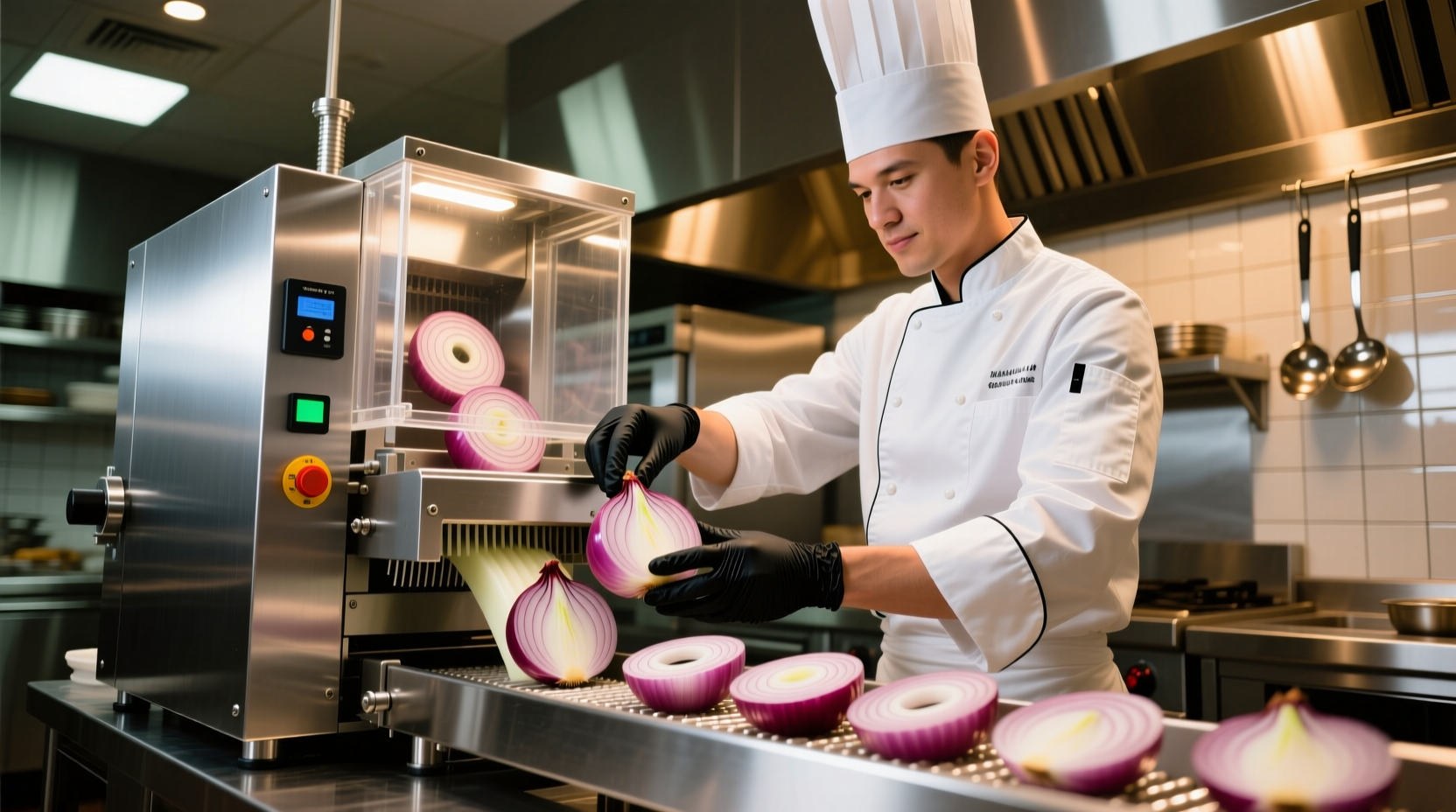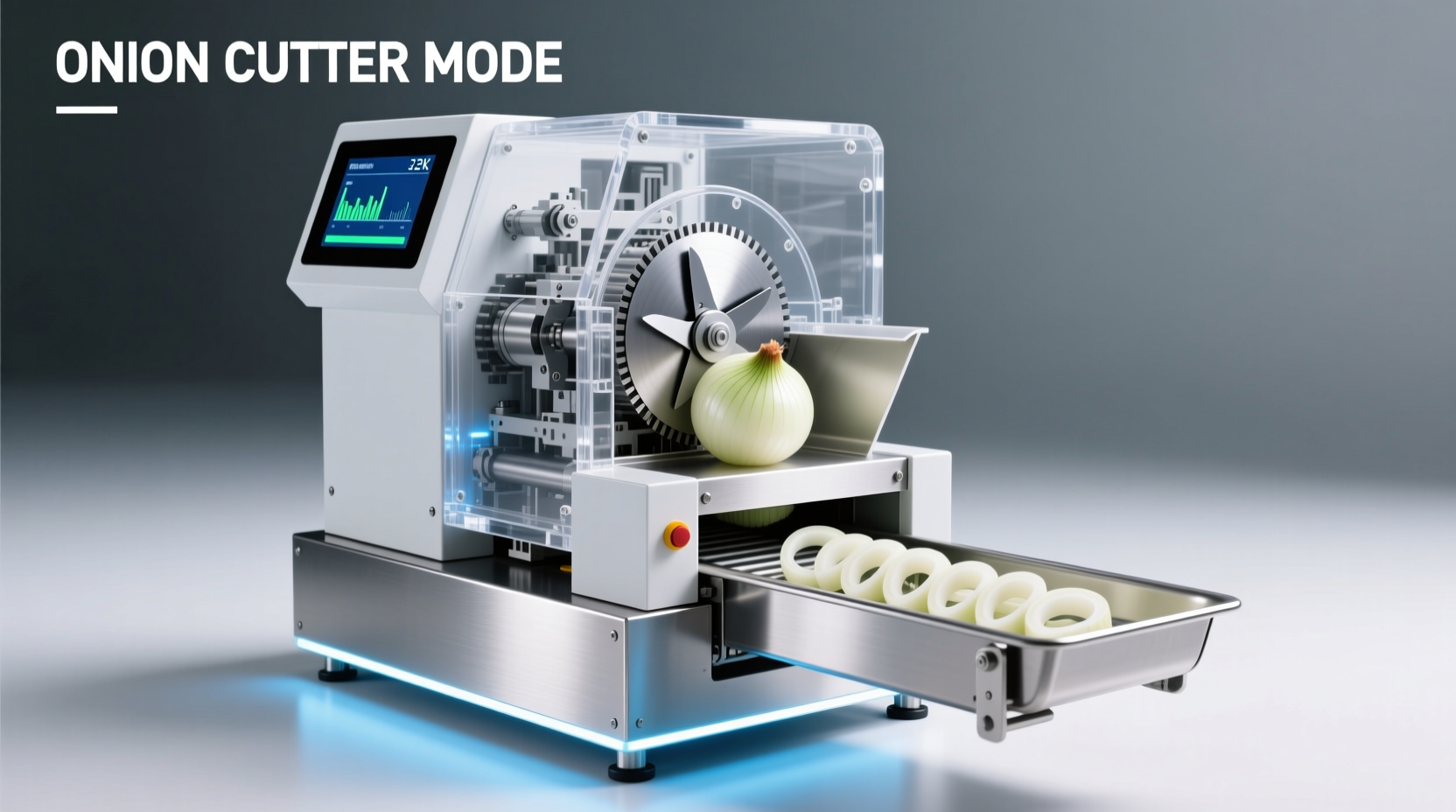Whether you're a home cook tired of teary-eyed prep sessions or a restaurant professional needing consistent results, understanding onion cutting technology transforms your kitchen workflow. Modern onion cutters address the universal challenge of lachrymatory factor release—the chemical reaction causing tears—through precision engineering that minimizes cell damage during cutting.
Why You Need an Onion Cutting Solution
Onion preparation ranks among the most time-consuming kitchen tasks. The USDA's Agricultural Research Service confirms that mechanical cutting reduces lachrymatory factor exposure by up to 85% compared to traditional methods. For commercial kitchens, this translates to significant labor savings—processing 50 onions manually takes approximately 25 minutes, while an electric cutter completes the task in under 7 minutes.
Matching Machines to Your Kitchen Reality
Your decision hinges on three critical factors: frequency of use, available space, and required output. Home cooks preparing onions 2-3 times weekly benefit from compact manual models, while restaurants serving onion-heavy dishes daily require commercial-grade equipment.
| Kitchen Type | Recommended Machine | Processing Capacity | Space Requirements |
|---|---|---|---|
| Home Kitchen (occasional) | Manual pull-cord cutter | 5-10 onions/minute | Under 10" x 6" |
| Home Kitchen (frequent) | Electric countertop model | 15-20 onions/minute | 12" x 8" |
| Commercial Kitchen | Industrial conveyor system | 100+ onions/minute | 36" x 24"+ |
Key Features That Actually Matter
When evaluating options, prioritize these often-overlooked elements:
- Blade geometry—curved blades create cleaner cuts with less cell rupture
- Interchangeable cutting grids for precise dice sizes (3mm-10mm)
- Non-slip bases critical for safety during operation
- Dishwasher-safe components for practical maintenance
The National Restaurant Association's 2024 Kitchen Equipment Survey revealed that 68% of professional kitchens prioritize easy disassembly when selecting cutting equipment—directly impacting daily sanitation compliance.

Practical Implementation Guide
Follow this sequence for optimal results:
- Chill onions for 30 minutes before cutting (reduces volatile compound release)
- Remove both ends while keeping the root plate intact
- Peel while maintaining structural integrity
- Position root-end first in the feeding tube
- Clean blades immediately after use to prevent oxidation buildup
When Not to Use an Onion Cutter
Understanding limitations prevents frustration. These situations warrant manual preparation instead:
- Preparing very small quantities (under 3 onions)
- Cutting specialty varieties like pearl onions
- Recipes requiring specific hand-cut techniques (e.g., French julienne)
- When immediate use isn't planned (mechanical cutting accelerates spoilage)
Food safety experts at the FDA emphasize that mechanical cutting increases surface area exposure, requiring stricter temperature control for stored pre-cut onions. Their 2023 guidelines specify that machine-processed onions must be refrigerated within 30 minutes of preparation.
Making Your Final Selection
Consider these often-overlooked factors before purchasing:
- Warranty coverage for blade replacement (typically 6-12 months)
- Availability of replacement parts in your region
- Noise levels for residential environments (under 75 decibels preferred)
- Ergonomic design for users with limited hand strength
Consumer Reports' 2024 testing showed that units with adjustable feed pressure mechanisms reduced onion waste by 22% compared to fixed-pressure models—a crucial consideration for cost-conscious kitchens.











 浙公网安备
33010002000092号
浙公网安备
33010002000092号 浙B2-20120091-4
浙B2-20120091-4